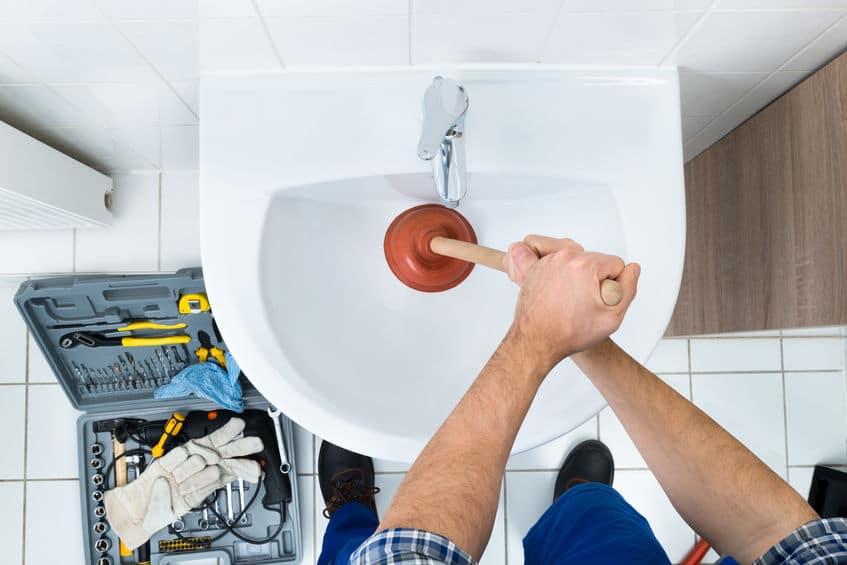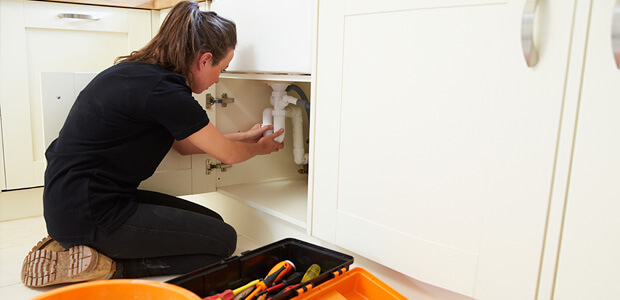Methods for Managing a Blocked Drain Before Hiring Professional Assistance
Methods for Managing a Blocked Drain Before Hiring Professional Assistance
Blog Article
Everyone is bound to have their personal piece of advice about Tips for Dealing with Clogged Drains and Sewer Lines.

Intro
Dealing with an obstructed drainpipe can be an aggravating experience, interrupting day-to-day tasks and possibly causing damages to your home. Nevertheless, before reaching out to plumbing professionals, there are steps you can require to attend to the issue yourself. In this overview, we'll discover DIY options and preventive measures to deal with a blocked drainpipe efficiently.
Identifying the Concern
The primary step in dealing with an obstructed drain is identifying the signs. Sluggish drainage, gurgling noises, foul odors rising from drains, or water backing up prevail signs of an obstructed drainpipe. Determining these indicators early can aid avoid additionally difficulties.
Choosing the Right Plumbing Service
When picking a pipes solution, consider elements such as experience, licensing, and client testimonials. Pick a trustworthy plumbing professional with a record of high quality workmanship and transparent pricing methods.
Expense Considerations
The cost of professional drainpipe cleaning company can vary depending on the severity of the obstruction and the plumbing's prices. Demand quotes from multiple service providers and ask about any type of additional charges to make certain transparency and stay clear of shocks.
Safety Measures
When attempting DIY drainpipe cleaning, prioritize security. Use protective handwear covers and eyeglasses to stay clear of contact with dangerous chemicals or bacteria. Never ever blend different drain cleansing products, as this can create harmful fumes.
Situation Researches
Real-life instances illustrate the efficiency of DIY services and the value of prompt specialist treatment in resolving drain blockages.
Usual Reasons For Obstructed Drains
Comprehending the elements that contribute to drain clogs is crucial for efficient resolution. Usual perpetrators include hair, soap scum, grease, food debris, and foreign things like sanitary products or paper towels. Tree origins attacking below ground pipelines can additionally create substantial blockages.
DIY Solutions
For minor blockages, several do it yourself remedies can be efficient. Pouring boiling water down the drain can assist liquify grease and particles. Baking soda and vinegar or a mixture of salt and baking soda can work as all-natural cleansers. Utilizing a bettor or plumbing snake to dislodge obstructions is an additional alternative.
Tools and Tools
Having the right tools on hand can make do it yourself drainpipe cleansing more efficient. A plunger is a flexible device for removing clogs in sinks, commodes, and showers. A pipes serpent or auger can reach deeper clogs, while drain cleaning chemicals can be used very carefully for stubborn blockages.
Safety nets
To stay clear of future obstructions, embracing safety nets is essential. Install drainpipe guards or filters to catch hair and debris prior to they go into the pipes. Frequently flush drains pipes with hot water to liquify grease buildup, and prevent taking care of oil or solid waste down the tubes.
When to Call an Expert
While do it yourself solutions can fix minor blockages, certain indicators suggest the need for expert support. Relentless obstructions, foul odors regardless of cleaning initiatives, or numerous drains backing up simultaneously are red flags that call for experienced intervention.
Conclusion
By complying with the ideas laid out in this overview, you can efficiently tackle blocked drains and avoid future pipes concerns. Whether selecting do it yourself remedies or looking for expert help, timely action is key to maintaining a healthy plumbing system and preserving the honesty of your home.
WHAT I LEARNED FROM TRYING TO DEAL WITH A CLOGGED DRAIN
We have had our share of seepages and other annoying things that are part of living, especially in an apartment complex. And if there’s one thing that’s terrifying for a homeowner—or even someone in a rented home—it is a clogged drain, indoors or outdoors.
We enjoy our living space, but it’s simply a fact of life that dead skin, soap and a host of other items go down the drain; eventually, the residue builds up and prevents anything from moving. Ugh.
Not Calling A Professional
Of course, it might seem simple to just whip the pipe off under the sink and see if you can unblock it. Unfortunately, what if the blockage isn’t there, or you don’t reconnect it properly? Worse, you might break a piece and have no drainage system. Can you imagine that scene? Yuck!
Not Watching Your Waste
This will sound d’uh, but the best tip I can give you for drain cleaning is to avoid clogging the drain in the first place! You can do this by monitoring what goes down the drain and catching the items which are most likely to give you a problem. Invariably hair, vegetable peels, and large wads of toilet paper are the most obvious culprits. Add a filter—these are available in hardware stores and can be removed and cleaned easily.
Poking The Drain
The first urge with a clogged drain is to poke at it with a stick or anything that resembles a stick. Sadly, this does not result in magically solving the issue. The mental image is, naturally, one of the stick just pushing through the offending item and all is well again. Reality is quite different and unpleasant and likely to lead to further problems.
The thing is, every drain has a series of bends that are not visible to us. Drains are built this way to prevent gases from entering the house. What happens when you poke a stick into the drain? Of course, it can’t bend around the corner. The more adventurous people will use force and end up wedging the stick or causing it to break off in the pipe—creating an even bigger issue. Worst thing? The stick will shift the block further down the pipe, creating the space for more to collect. Go ahead! Roll your eyes!
Using The Wrong Plunger
You know what they say: the right tool for the right job! Did you know there are different types of plungers besides the basic one we keep at home for an emergency? Yes, there are. For example, the toilet plunger has a bell-shaped bottom while the sink plunger is flat. This is an important difference and using the wrong plunger will be useless. There’s also a knack in using plungers—they must be placed in such a way that they create an airtight seal and then, moved slowly up and down—not as fast as we imagine.
https://vidyasury.com/2018/01/learned-trying-deal-clogged-drain.html

Hopefully you liked our post about Tips for Dealing with Clogged Drains and Sewer Lines. Many thanks for spending some time to read through our content. Do you know another person who is serious about the subject? Why not promote it. Bless you for being here. Kindly visit our site back soon.
Schedule Service Pickup Report this page